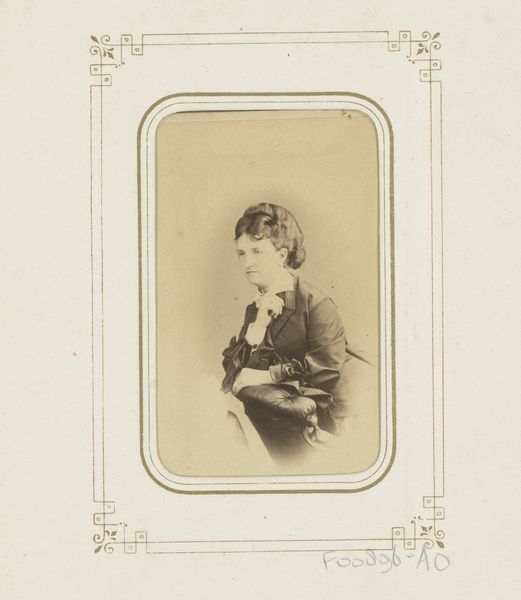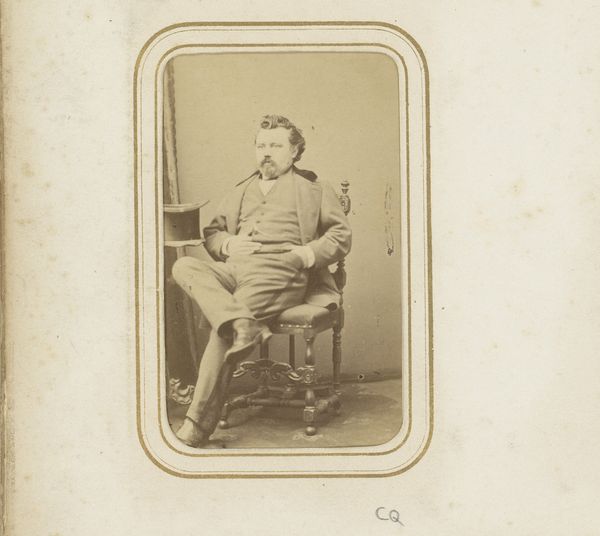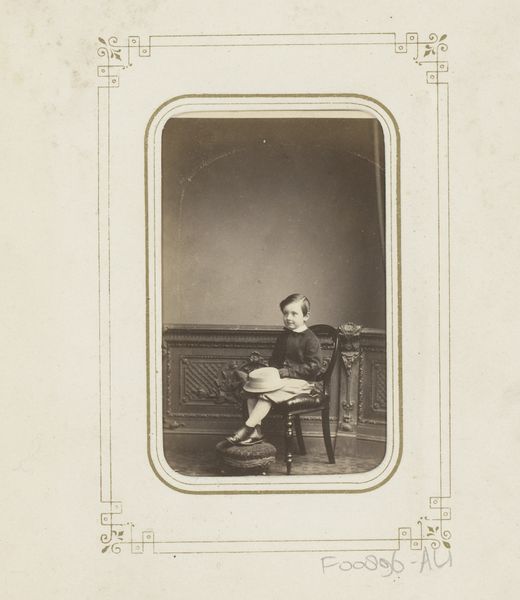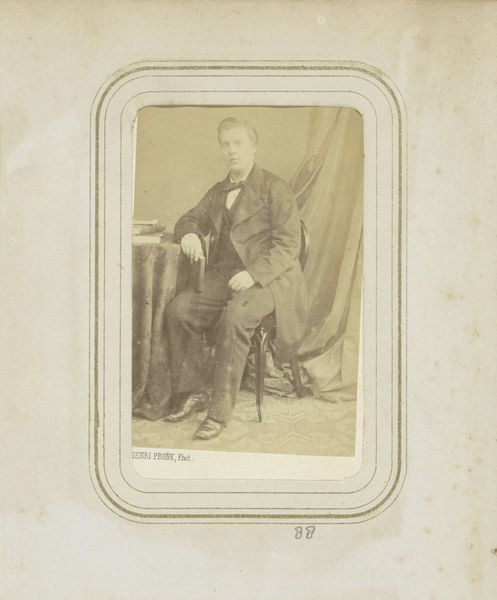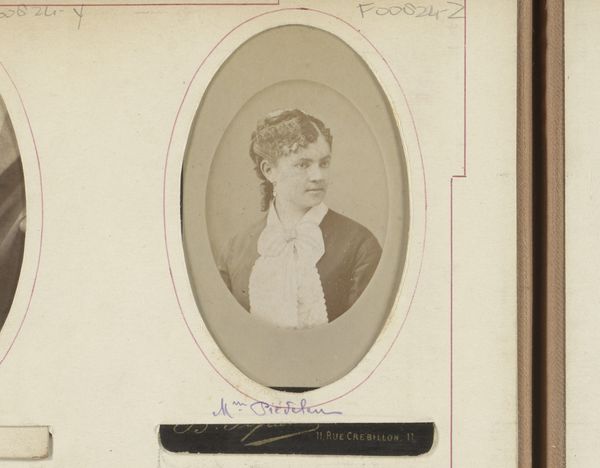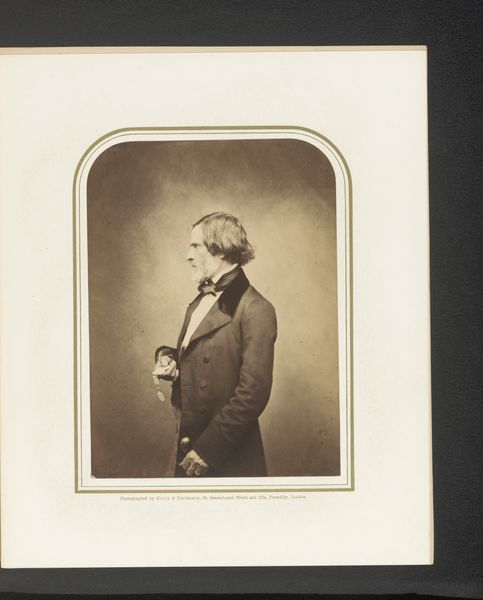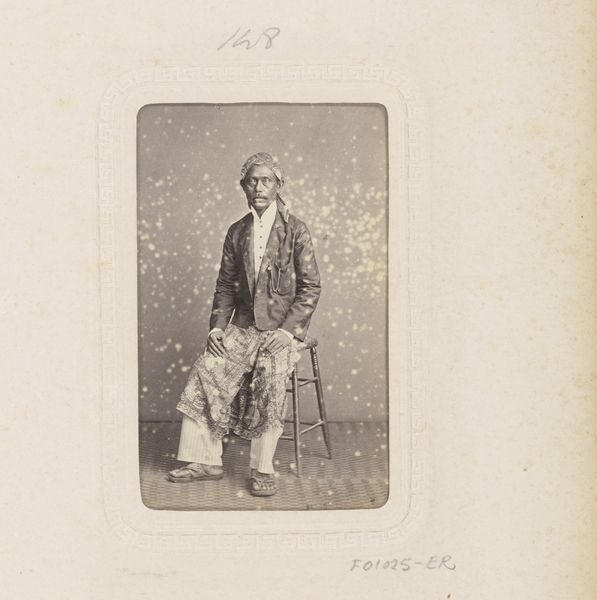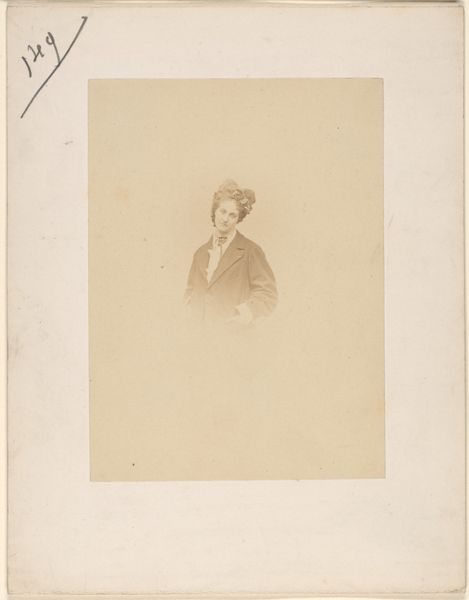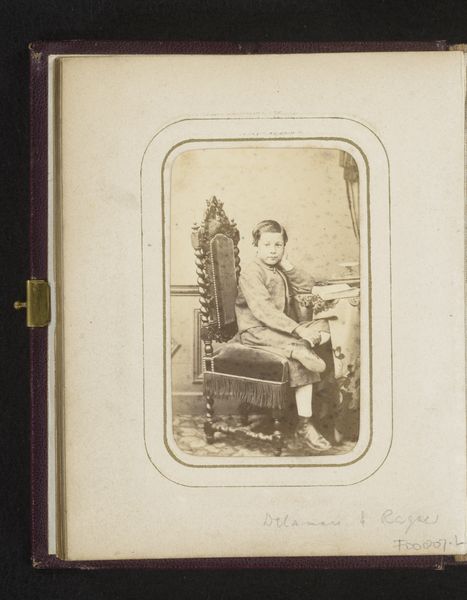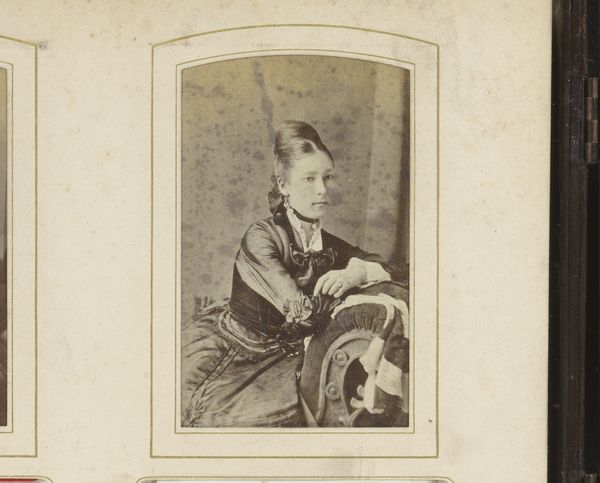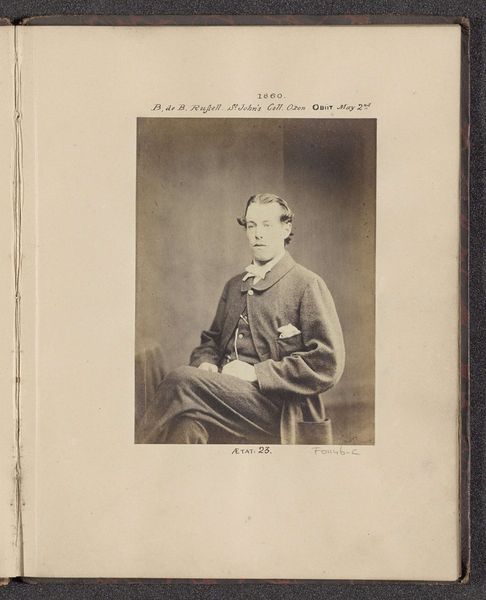
print, daguerreotype, photography
#
portrait
#
16_19th-century
# print
#
daguerreotype
#
photography
#
19th century
Dimensions: 18.6 × 14.7 cm (image/paper); 28.5 × 23 cm (album page)
Copyright: Public Domain
Curator: Here we have an intriguing find: an anonymous daguerreotype from 1856, now held at the Art Institute of Chicago. Its title is "Untitled (The President of the Board of Health)." It depicts exactly what the title says! Editor: Well, if the Board of Health was anything like today, I'd guess there’s probably some environmental doomsday pronouncements getting written in a hurry. Something about water quality maybe. It’s got that grave, weighty atmosphere about it. The sepia tones don’t help with levity! Curator: Indeed! Photography at this stage often mirrored the conventions of portraiture that had been developed over centuries in painting. The subject's profile, the desk as a signifier of his status, the dark coat creating a sort of visual anchor. Note, however, that it's also strikingly informal. Editor: Informal? Maybe by 1850s standards! I suppose so. I just get this sense he’s permanently preoccupied. It’s probably that deep concentration pulling his face downwards...a face of buried responsibility. Curator: Precisely! Think of the rise of the middle class at the time. He's writing. But it looks more like an act. A carefully designed persona for a new kind of civic leader, mediating science and community. Health was increasingly a public concern at the time. His is the face of authority. Editor: Oh, absolutely. You nailed it there. I mean, the artist, even anonymous, seems conscious of constructing a symbol as much as capturing a likeness. Curator: Right. In the visual language of the mid-19th century, what do you suppose the significance is, even unconsciously, that the Board of Health President is "indicting a sewer?" Editor: Sounds ominous, even vaguely criminal. He’s penning some verdict upon the drains of society! What a way to cement bureaucratic seriousness. Curator: What's really fascinating to me is the tension between the deliberate staging and the inherently documentary nature of the photographic medium. This piece serves both purposes in a way. Editor: Definitely, I like the way that perceived gravitas blends perfectly into the historical texture of its time. Curator: Right? This little snapshot speaks volumes.
Comments
No comments
Be the first to comment and join the conversation on the ultimate creative platform.
